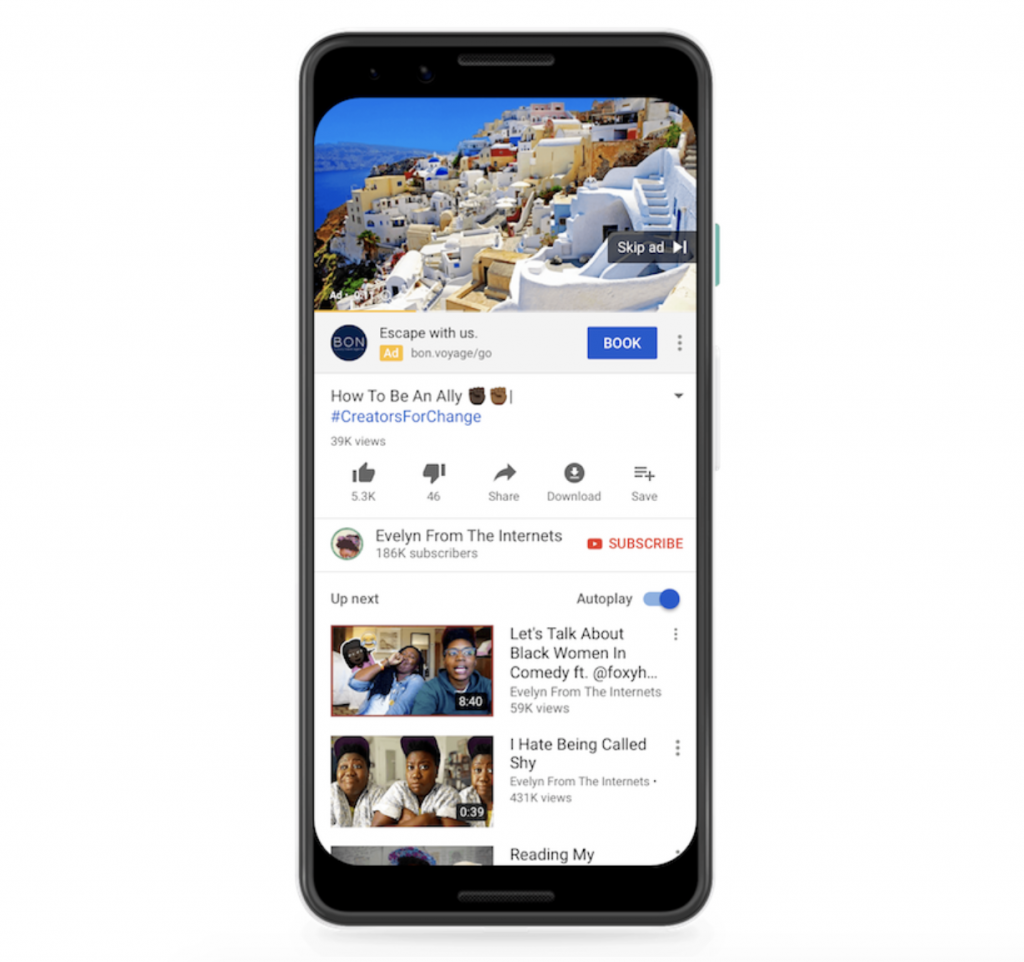From mobile app updates to enhanced targeting, these are the latest Google Ads tools that should be on your radar.
Here, you’ll find:
- The latest Google Ads tools worth looking into
- How these tools can enhance your digital marketing efforts
- Ways to make responsive search ads work for you
- New updates to YouTube ads
In February 2020, Google made the decision to cancel one of its biggest annual gatherings, the Google I/O developer conference. The cancellation came amid the nascent (but, it turns out, lasting) pandemic that had begun sweeping the globe.
But that doesn’t mean things have slowed down at the search engine giant. Google continues to churn out updates, news, and modifications to its search algorithm and ads platform.
Whether you’re neck-deep in advertising on a daily basis, just getting started, or working with an agency, these five new Google Ads tools and updates can help make management more convenient, improve your targeting, boost your conversion rates, and more.

The Google Ads app has gone through improvements to make managing your Google Ads account on the go easier than ever. (Image via Google)
1. Improved Google Ads mobile app
Overall consumer trends continue to favor mobile over desktop. Not only that, but Google itself has announced that it will launch mobile-first indexing in spring 2021. This means the search engine will crawl the mobile site of a web page before the desktop version to determine where it should rank in search results.
With all this in mind, it’s no surprise that the Google Ads app has recently gone through its own set of improvements to make managing your Google Ads account on the go easier than ever. Before, you could only use the app to turn on and pause ads. Now, you can also create and edit responsive search ads whether at home, in the office or on the go.
2. Enhanced targeting tools
While targeting tools are nothing new to the Google Ads platform, there are new audience segmentations that you can now put to use. Affinity audience targeting can help you attract more top-of-funnel leads, while in-market audience targeting can help connect you with more bottom-of-the-funnel searchers ready to make a decision.
Affinity audiences can expand your ad reach and help you snag those who could be in the market for your product or service by virtue of their interests. For example, if you’re targeting keywords like “chef’s knife,” an affinity audience could be “home cooks.” For in-market audiences, you can better target those who are ready to buy but that you might not otherwise be targeting.

You can create these extensions in your Google Ads app by adding a CTA and extension text. (Image via Unsplash)
3. Responsive search ads
Put simply, responsive search ads let your ads work smarter, not harder. By creating multiple headlines and descriptions for your responsive search ads, Google can try out various combinations and eventually determine which ones perform best together.
These types of search ads also allow you to show more text in your ads, which provides helpful context for your customers and can potentially increase your conversion rate. Best practices for responsive search ads include:
- Putting high-volume keywords in your headlines
- Creating a minimum of five varied headlines that aren’t too similar to one another
- Including at least two varied descriptions
- Adding additional headlines and descriptions that highlight other benefits of your product or service
4. Lead form ad extensions
Leads are at the heart of digital marketing. That’s because more leads mean more data, which means more information about your customers and prospects, which (ideally) means higher conversions and stellar ROI.
That’s where the lead form ad extension comes in. You can create these extensions in your Google Ads app by adding a call to action (CTA) and extension text. Once a user clicks the CTA button, a form will appear. Plus, just to make submission easy-breezy, the form can be pre-populated with the user’s contact info pulled from their own Google account.
While optimized landing pages are still important, this ad extension allows you to experiment with a new form of information gathering and can pair well with your other efforts to get you as many leads as possible.

The new ad extensions work similarly to lead form ad extensions in that the viewer can interact with your CTA without leaving the YouTube platform. (Image via Google)
5. New YouTube ad extensions
Nearly three-fourths of the U.S. population use YouTube. And with billions of monthly users across the globe, it makes sense that Google is consistently working to enhance and improve the popular video platform. The same goes for YouTube ads.
We talked before about the various types of YouTube ads and best practices when creating video ads of your own. The new ad extensions work similarly to lead form ad extensions in that the viewer can interact with your CTA without leaving the YouTube platform.
Once someone clicks the CTA, they’ll see a drop-down menu with additional next steps, such as a special discount code, a limited-time offer, or more information about your brand.
The takeaway
Between the algorithm changes, policy updates, and app iterations, keeping up with Google can seem like a full-time job. And, of course, some updates will be more impactful than others.
But staying in the loop is worth it. By knowing about all the latest and greatest Google Ads tools, you can be sure you’re taking advantage of all the features at your disposal and staying competitive in your industry.
This article has been updated and was originally published in October 2019.



